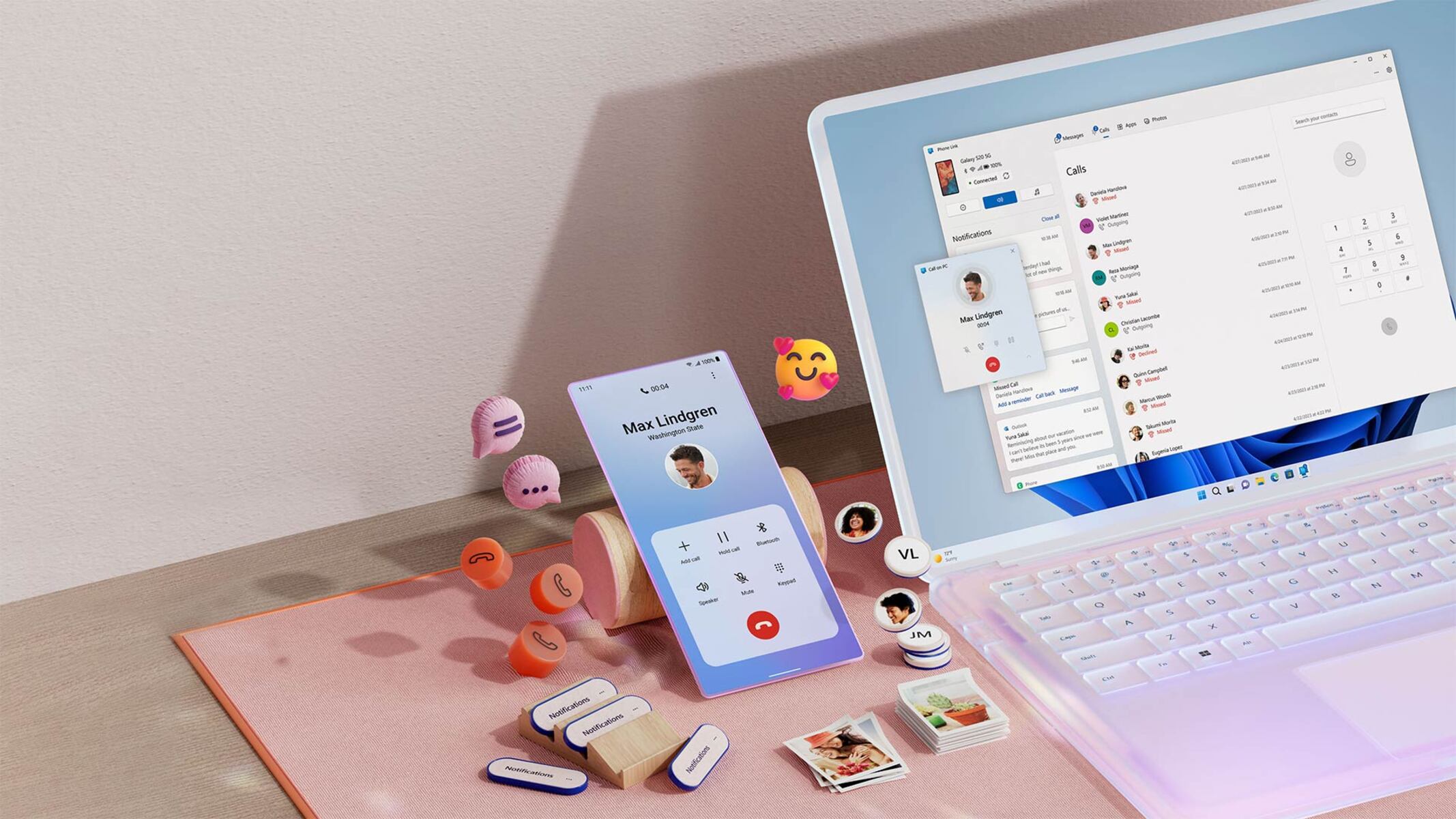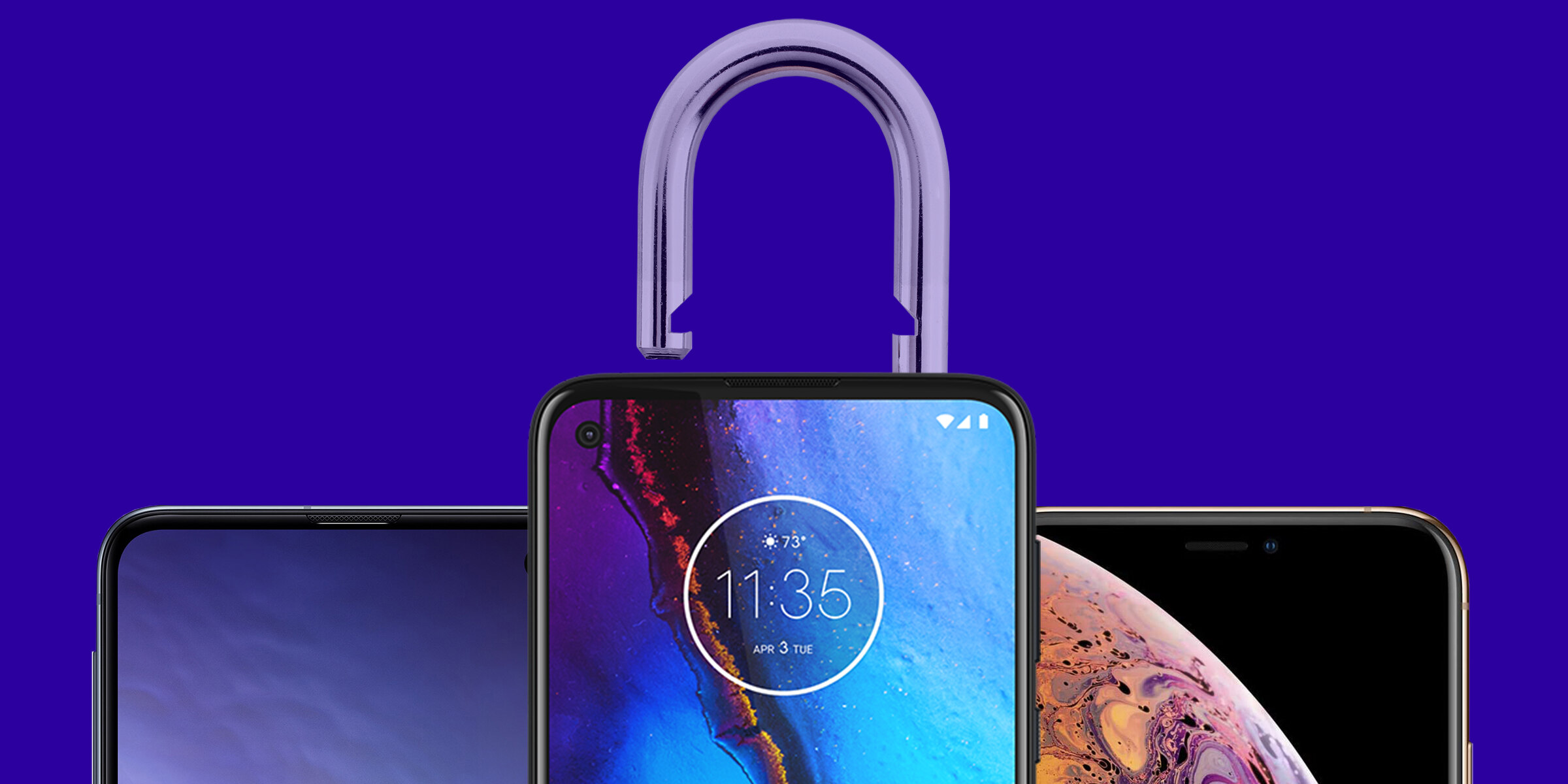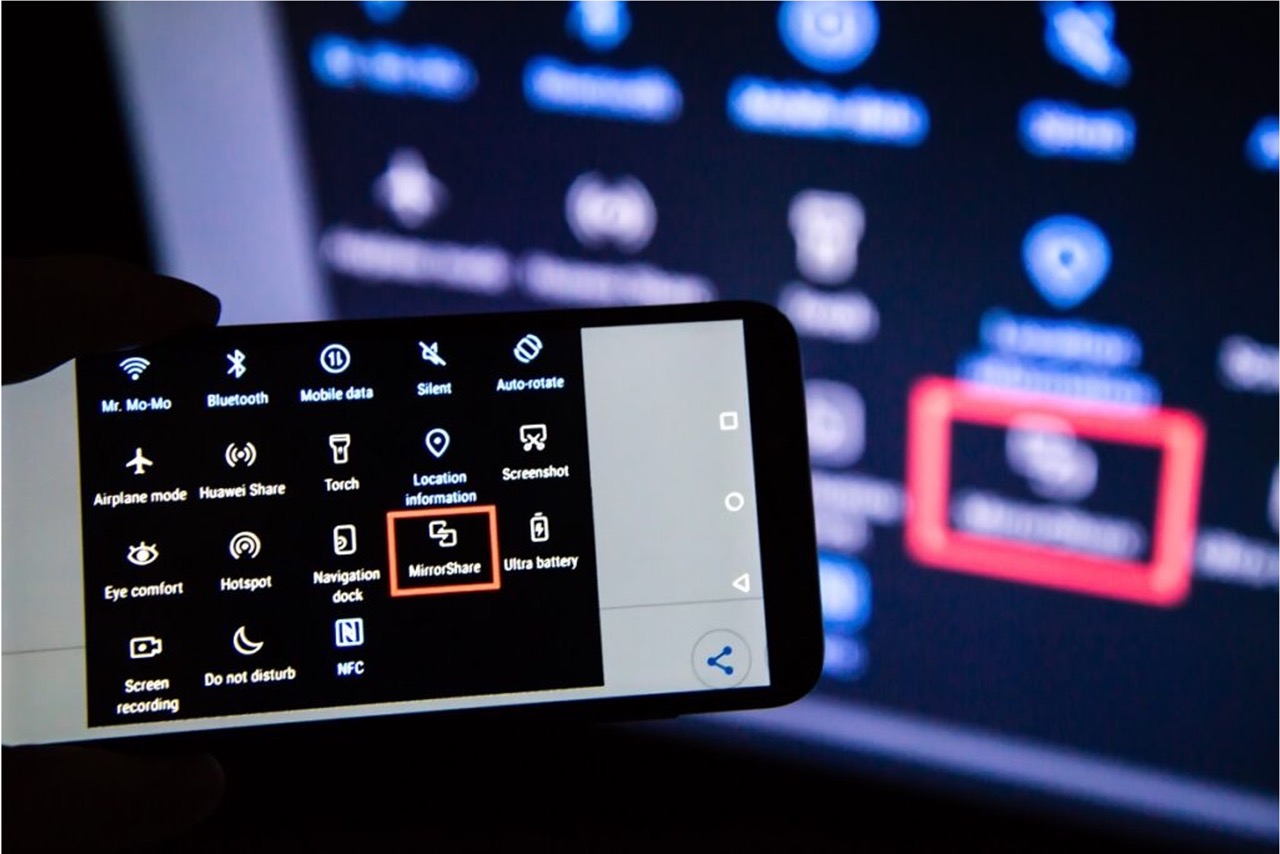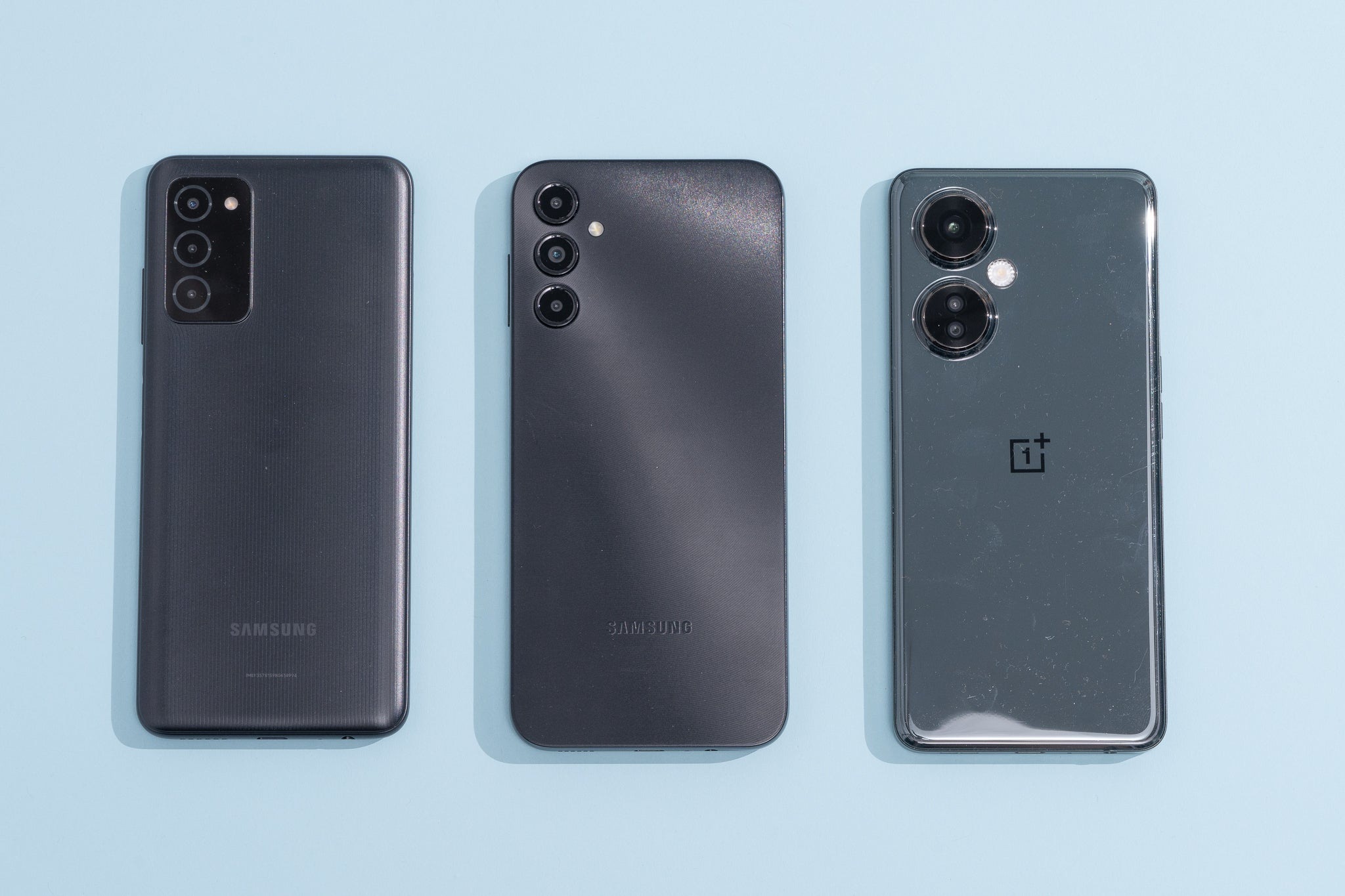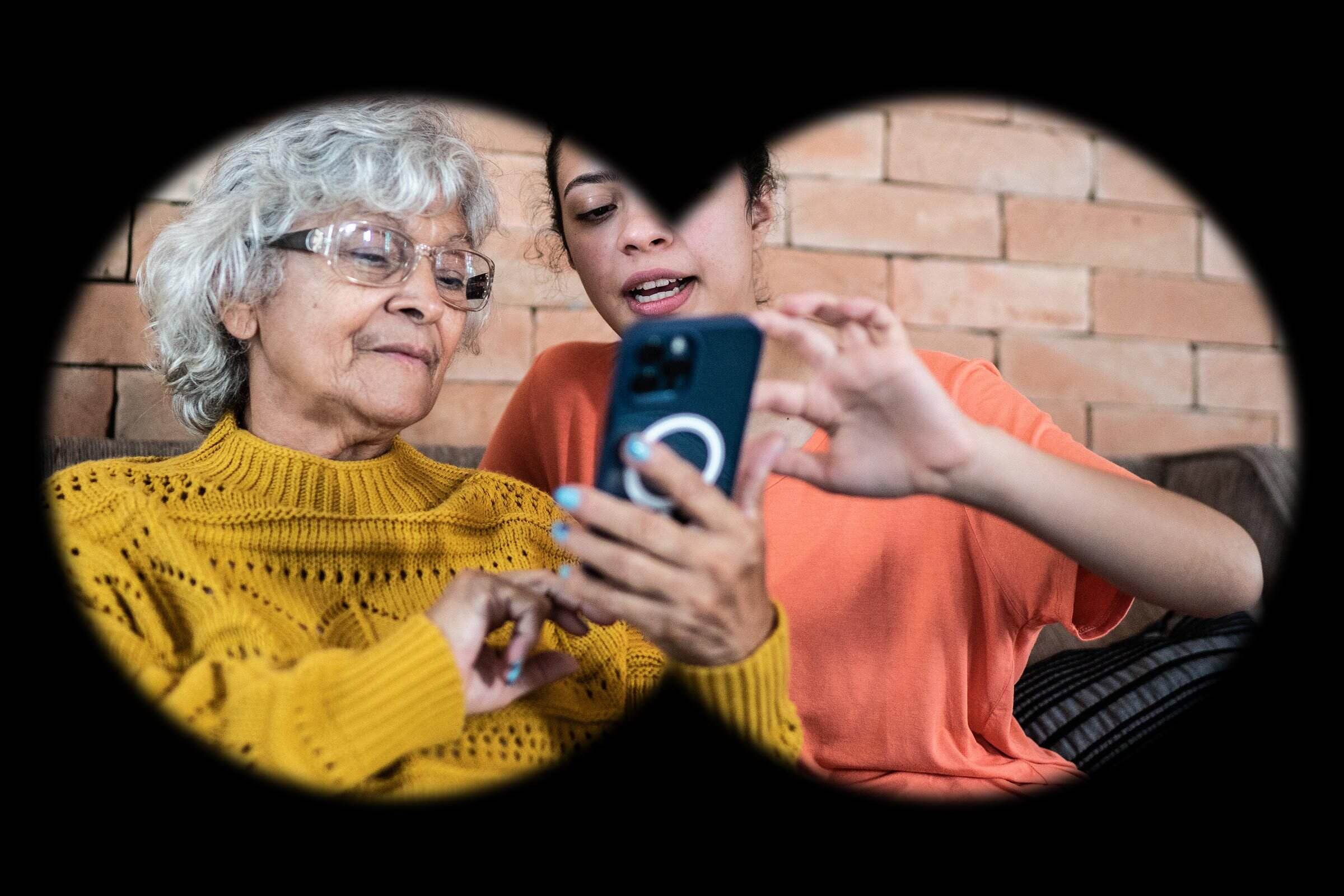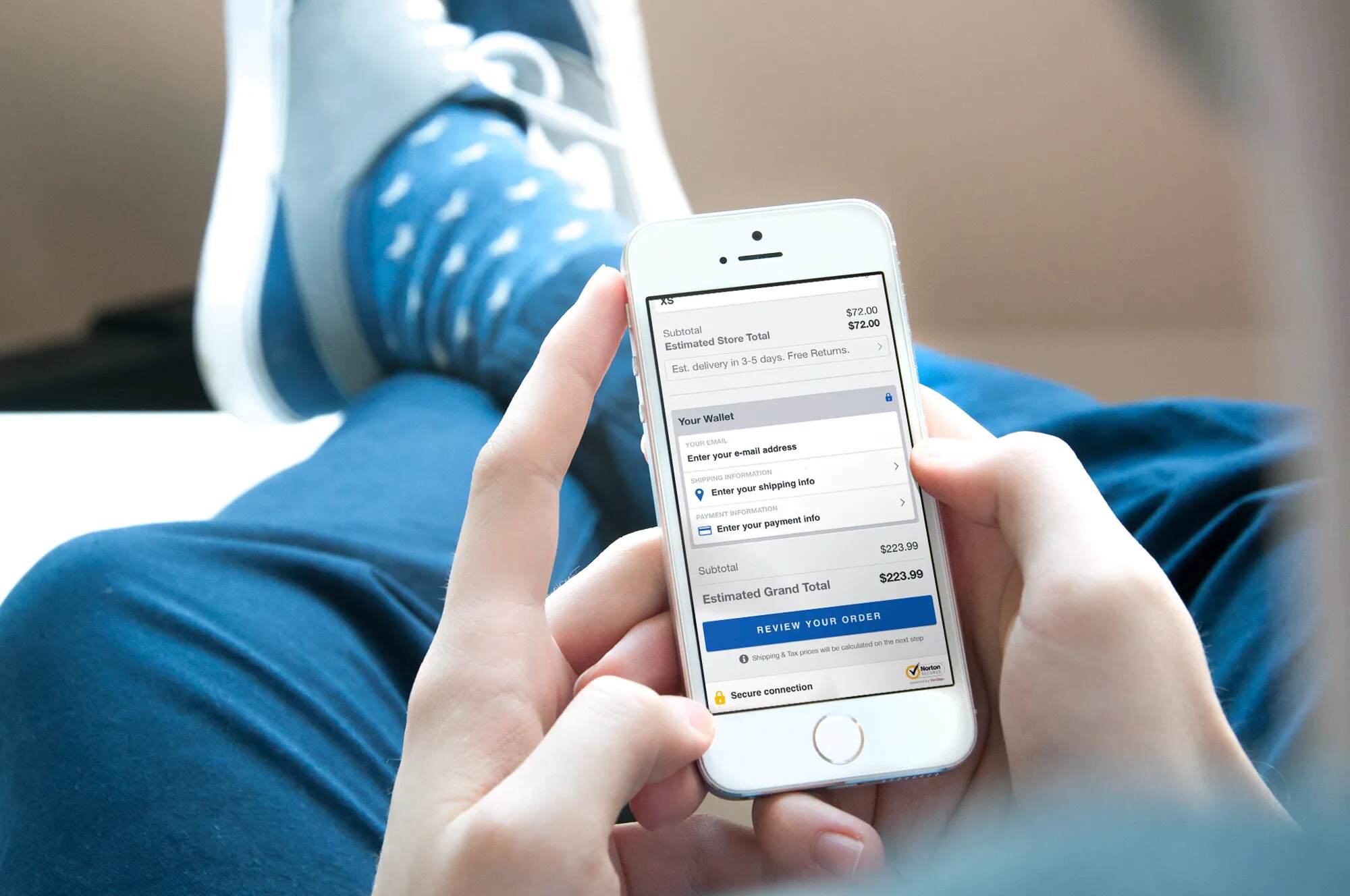Introduction
Smartphones have become an integral part of our daily lives, revolutionizing the way we communicate, stay organized, and entertain ourselves. With their ever-evolving technology and vast array of features, smartphones offer a multitude of functions and possibilities. From staying connected with friends and family to managing our finances and exploring new destinations, smartphones have become indispensable tools for modern living.
In this article, we will explore the various ways in which smartphones can enhance our lives and simplify our daily tasks. Whether you’re a student looking to learn new skills, a professional seeking to boost productivity, or someone who enjoys capturing moments through photography, there is something for everyone in the world of smartphone functionality.
It’s no secret that smartphones have revolutionized communication. With instant messaging apps, social media platforms, and video calling capabilities, staying connected with loved ones is easier than ever. No matter where you are in the world, you can send a message, make a call, or share photos and videos in an instant. Smartphones have shrunk the global distances and brought people closer together.
Beyond communication, smartphones offer a wide range of productivity and organization tools. From calendar apps that help you stay on top of your schedule to note-taking apps that allow you to jot down important thoughts and ideas, smartphones ensure that you stay productive and organized on the go. With the ability to access emails and work documents, you can even take your office with you wherever you are, allowing for maximum efficiency and flexibility.
When it comes to entertainment, smartphones are a treasure trove. Whether you enjoy watching movies and TV shows, listening to music, or playing games, smartphones can cater to your every entertainment need. Streaming services like Netflix and Spotify give you access to a vast library of content, while gaming apps provide endless hours of fun and excitement. With high-resolution displays and powerful processors, smartphones offer a truly immersive entertainment experience.
Social media has become an integral part of our lives, and smartphones are the perfect tool for staying connected and engaged on these platforms. Accessing social media apps on your smartphone allows you to share your thoughts, pictures, and videos with the world. It also enables you to stay updated with the latest news, trends, and events, and connect with people from all walks of life.
The educational landscape has also been transformed by smartphones. With access to a myriad of educational apps and online learning platforms, you can expand your knowledge and learn new skills right from the palm of your hand. Whether you’re studying for exams, learning a new language, or exploring a new field of interest, smartphones provide a wealth of educational resources at your fingertips.
One of the most popular features of smartphones is their ability to capture stunning photos and videos. With high-quality cameras and advanced editing tools, your smartphone becomes a powerful photography and videography device. From capturing breathtaking landscapes to capturing precious moments with loved ones, smartphones allow you to document and relive memories in a convenient and sophisticated manner.
Health and fitness are important aspects of our lives, and smartphones have stepped in to help us stay on track. Whether it’s tracking your steps, monitoring your sleep patterns, or following workout routines, fitness apps and wearable devices connected to your smartphone provide a comprehensive and personalized approach to wellness.
Financial management is made easier with smartphone apps that allow you to track expenses, manage budgets, and even make payments. From banking apps to mobile wallets, smartphones have transformed the way we handle our finances, providing convenience and security at our fingertips.
When it comes to travel, smartphones are essential companions. From GPS navigation apps that guide you to your destination to travel planning tools that help you organize flights and accommodations, smartphones have made exploring the world more accessible and enjoyable. With access to travel reviews and recommendations, you can discover new destinations and plan your itinerary with ease.
Gaming enthusiasts also have a reason to rejoice, as smartphones offer a wide range of gaming options. From casual puzzle games to high-intensity multiplayer battles, smartphones provide a gaming experience that fits every taste and preference. With powerful processors and responsive touchscreens, you can immerse yourself in the virtual world anytime, anywhere.
Smartphones have transformed the way we shop and engage in e-commerce. With online shopping apps and mobile payment options, you can browse and purchase products with just a few taps. Whether you’re buying clothes, electronics, or groceries, smartphones provide a convenient and efficient shopping experience.
Lastly, smartphones offer a high degree of personalization and customization. From customizing your home screen layout to downloading various themes and wallpapers, you can make your smartphone reflect your unique style and personality. With access to app stores and digital libraries, you can personalize your smartphone experience to suit your preferences.
As you can see, smartphones have become more than just devices for communication. They have seamlessly integrated into all aspects of our lives, enhancing productivity, communication, and entertainment. Whether you’re a student, professional, traveler, or simply someone looking for convenience and fun, smartphones offer a multitude of functions that cater to diverse needs and interests.
So, dive into the world of smartphones and explore the endless possibilities they offer. Embrace the power of technology as you navigate through the digital landscape, knowing that your smartphone is your trusted companion for every facet of life.
Communication
One of the primary functions of smartphones is to facilitate communication, and they excel at it in numerous ways. Whether it’s staying connected with friends and family or collaborating with colleagues, smartphones offer a plethora of communication options.
With the advent of messaging apps, such as WhatsApp, Facebook Messenger, and Telegram, sending text messages and staying in touch has never been easier. These apps provide instant messaging capabilities, allowing users to communicate in real-time with individuals or groups. Emojis, stickers, and GIFs add a fun and expressive touch to conversations, making interactions more engaging and entertaining.
Not limited to just text, smartphones also allow for voice and video calls. Applications like Skype and FaceTime enable users to make free or low-cost voice and video calls to anyone across the globe. This feature has transformed the way we connect with loved ones who are far away, bringing them closer despite the physical distance.
In addition to personal communication, smartphones have become essential tools for professional collaboration. With email clients, such as Gmail and Outlook, installed on smartphones, accessing and responding to work emails on the go has become effortless. This means that important communications and updates are never missed, ensuring efficient and timely responses.
Smartphones also support various file-sharing options, making it convenient to send and receive documents, photos, and videos. Whether it’s sharing work-related files with colleagues or sending vacation pictures to friends, smartphones provide quick and easy sharing capabilities through messaging apps or email attachments.
Social media platforms are also an integral part of communication with smartphones. Apps like Facebook, Twitter, Instagram, and LinkedIn allow users to interact, share updates, and engage with others. These platforms offer an ideal space for networking, promoting businesses, and staying informed about the latest trends and news.
Notably, smartphones have expanded communication beyond traditional means, allowing users to communicate through voice assistants. With the rise of virtual assistants like Siri, Google Assistant, and Alexa, users can ask questions, perform tasks, and even initiate calls and messages through voice commands, making communication hands-free and intuitive.
Smartphones have truly transformed communication, enabling us to stay connected with others at all times. Whether it’s through text messages, voice/video calls, or social media platforms, smartphones have made the world a more connected place. As technology continues to advance, it’s exciting to envision how smartphones will further revolutionize communication in the years to come.
Productivity and Organization
Smartphones have become indispensable tools for enhancing productivity and facilitating organization in both personal and professional environments. With a myriad of apps and features designed specifically for productivity, smartphones help us stay organized, manage tasks efficiently, and maximize our productivity levels.
One of the key productivity features of smartphones is the ability to access and manage calendars. Calendar apps, like Google Calendar, Apple Calendar, and Microsoft Outlook, allow users to schedule appointments, set reminders, and organize their daily, weekly, and monthly activities. With notifications and reminders, you never miss an important meeting or event, ensuring that you stay on top of your schedule.
Time management apps are another powerful tool for enhancing productivity. These apps enable users to track and analyze their time usage, set goals, and prioritize tasks. With features such as timers and reminders, users can allocate their time effectively and stay focused on their work. Some examples of popular time management apps include Toggl, Todoist, and Forest.
Note-taking apps on smartphones have revolutionized the way we capture and organize our thoughts. Apps like Evernote, OneNote, and Google Keep allow users to jot down ideas, create to-do lists, and save important information. The ability to organize notes into categories and access them across multiple devices ensures that you have all your important information at your fingertips, no matter where you are.
Task management apps have become essential in helping individuals and teams stay organized and accomplish their goals. Apps such as Trello, Asana, and Wunderlist allow users to create and manage tasks, set deadlines, and collaborate on projects. With features like progress tracking and notifications, these apps help streamline workflows and ensure tasks are completed on time.
In addition to specific productivity apps, smartphones offer seamless integration with email and cloud storage services. This allows users to access work documents, spreadsheets, and presentations on the go, making it possible to work efficiently from anywhere. Whether you’re responding to important emails or reviewing documents, smartphones provide the flexibility to stay productive even when away from the office.
File organization is made easier with smartphones, as they offer easy file management and synchronization. Built-in file managers or third-party apps like Dropbox and Google Drive allow users to store, organize, and share files across multiple devices. This accessibility ensures that important files are always within reach, promoting a clutter-free and efficient work environment.
Furthermore, smartphones enable easy communication and collaboration with colleagues and teams. Messaging apps like Slack and Microsoft Teams provide instant team communication channels, allowing for quick discussions, sharing of files, and efficient collaboration. With video conferencing apps like Zoom and Skype, remote team meetings become seamless and productive.
Smartphones have truly revolutionized productivity and organization, empowering individuals to manage their time effectively, stay organized, and accomplish tasks more efficiently than ever before. With the wide range of productivity apps and integrated features available, smartphones have become invaluable assistants in our daily lives.
Entertainment
When it comes to entertainment, smartphones offer a vast array of options to keep us entertained and engaged. From streaming movies and music to playing games and exploring virtual worlds, smartphones have transformed the way we entertain ourselves.
Streaming services have revolutionized the way we consume media, and smartphones provide a portable and convenient platform for accessing these services. With apps like Netflix, Hulu, and Amazon Prime Video, we can watch our favorite movies and TV shows anytime, anywhere. Smartphones with high-resolution displays and immersive audio capabilities enhance the viewing experience, bringing cinematic entertainment to the palm of our hands.
Music lovers also have countless options for enjoying their favorite tunes on smartphones. Music streaming apps like Spotify, Apple Music, and YouTube Music give users access to a vast library of songs, albums, and playlists. Whether you’re commuting, working out, or relaxing, your smartphone becomes a portable jukebox, delivering high-quality sound and personalized music recommendations.
Gaming on smartphones has experienced a remarkable evolution with advanced graphics, immersive gameplay, and a wide variety of titles to choose from. From casual puzzle games to intense multiplayer battles, smartphones provide a gaming experience for every taste and interest. With touchscreens, accelerometers, and gyroscopes, smartphones offer intuitive controls, ensuring an engaging and enjoyable gaming experience on the go.
Augmented reality (AR) and virtual reality (VR) have further expanded the possibilities of smartphone entertainment. AR apps, like Pokemon Go and Snapchat, bring digital elements into our physical surroundings, allowing us to interact with virtual characters or enhance our photos and videos. VR apps, on the other hand, transport us to virtual worlds and immersive experiences, making us feel like we’re part of the action.
Podcasts have also gained popularity as a form of entertainment, and smartphones make it easy to access and listen to your favorite podcasts. Whether you’re interested in educational podcasts, true crime stories, or comedy shows, podcast apps like Spotify, Apple Podcasts, and Stitcher provide a wide variety of content to suit any interest.
Smartphones also offer a gateway to virtual socializing and community engagement. Social media platforms like Facebook, Instagram, and TikTok allow users to connect, share, and discover content from around the world. Engaging with other users, following influencers, and participating in online communities contribute to the entertainment aspect of smartphone usage.
Photography and videography can also be sources of entertainment with smartphones. Most smartphones are equipped with high-quality cameras and editing tools, allowing users to capture stunning photos and videos. Experimenting with different shooting modes, filters, and effects can turn photography into a fun and creative hobby, bringing joy and entertainment to smartphone users.
With the abundance of entertainment options available on smartphones, there is never a dull moment. Whether you’re watching your favorite show, listening to music, immersing yourself in virtual reality, or exploring new games, smartphones provide a versatile and portable entertainment hub that caters to a wide range of interests and preferences.
Social Media and Networking
Social media platforms have become an integral part of our lives, and smartphones serve as the gateway to staying connected, informed, and engaged in these digital communities. With a smartphone in hand, we have instant access to a world of social media and networking opportunities.
Social media apps like Facebook, Instagram, Twitter, and LinkedIn have revolutionized the way we connect with others and share our lives. These platforms enable us to stay connected with friends, family, and colleagues, regardless of physical distance. We can share updates, photos, and videos, and engage in conversations with a simple tap on our smartphones.
Smartphones enhance social media experiences through their intuitive interfaces and built-in features. From taking photos and videos directly within the app to instantly sharing them with our networks, smartphones provide a seamless and efficient way to document and share our experiences in real-time. We can capture and share the highlights of our lives with just a few taps on our smartphone screens.
With social media apps, we can stay updated with the latest news, trends, and events. We have the power to follow our favorite celebrities, influencers, news outlets, and brands, receiving instant updates and insights into their lives and activities. Our smartphones become personalized news feeds, keeping us informed and connected to the world around us.
Additionally, smartphones enable us to engage with social media communities and form new connections. We can join groups, participate in discussions, like and comment on posts, and share our thoughts and opinions. These interactions foster a sense of belonging and allow us to connect with like-minded individuals who share similar interests and passions.
Networking professionals also benefit greatly from smartphones and social media platforms. Apps like LinkedIn provide a professional networking space, where individuals can showcase their skills, connect with potential employers or clients, and stay up-to-date with industry news and developments. With smartphones, networking becomes mobile, allowing professionals to connect and expand their professional networks on the go.
Furthermore, smartphones facilitate the discovery of new opportunities and collaborations. Social media platforms provide a platform for businesses, entrepreneurs, and freelancers to showcase their work and connect with potential clients or customers. From promoting products and services to forming strategic partnerships, smartphones and social media play a pivotal role in expanding business networks and fostering growth.
Smartphones and social media have also extended social activism and have become powerful tools for raising awareness and driving change. Social media campaigns can mobilize large groups of people, promote social causes, and create a collective voice for social justice. The accessibility and reach of smartphones make it possible for anyone to contribute to important discussions and movements, regardless of their location.
Overall, smartphones have transformed the way we engage with social media and form connections. They have made social media networks accessible at our fingertips, allowing us to connect, share, and engage with others. Whether it’s staying connected with friends and family, networking professionally, or participating in social movements, smartphones provide us with the tools to connect and thrive in the digital world.
Education and Learning
Smartphones have revolutionized the way we approach education and learning, providing us with access to a wealth of knowledge and educational resources at our fingertips. With a smartphone in hand, we have the ability to expand our knowledge, learn new skills, and engage in educational experiences anytime and anywhere.
One of the key advantages of smartphones in education is the availability of educational apps. These apps cover a wide range of subjects and topics, catering to learners of all ages and interests. Whether you’re a student studying for exams, an adult looking to acquire new skills, or a lifelong learner with a thirst for knowledge, there are educational apps that can guide and support your learning journey.
Language learning apps, like Duolingo and Babbel, provide interactive lessons, vocabulary practice, and language proficiency assessments. These apps enable users to learn different languages at their own pace, making language learning both accessible and enjoyable. With exercises that focus on speaking, listening, reading, and writing, smartphones facilitate language learning on the go.
Another area where smartphones excel in education is in providing access to online courses and learning platforms. Platforms like Coursera, Udemy, and Khan Academy offer a wide range of courses taught by experts in various fields. From business and technology to arts and sciences, you can explore and learn from the comfort of your smartphone, with the flexibility to study at your own pace.
Smartphones also enhance the learning experience through multimedia content. With high-resolution screens and immersive audio capabilities, smartphones allow for engaging multimedia learning materials. Video lectures, interactive simulations, and visual presentations bring concepts to life, making learning more dynamic and memorable.
Additionally, smartphones facilitate collaboration and group learning through communication and productivity apps. Tools like Google Docs, Microsoft Teams, and Slack allow students and educators to collaborate on projects, share notes, and discuss ideas. With smartphones, group work becomes more accessible and efficient, enabling seamless communication and real-time collaboration, regardless of physical location.
Smartphones also serve as powerful research tools, providing instant access to a wealth of information through search engines and online libraries. Students can quickly search for academic articles, reference materials, and scholarly resources right from their smartphones. This accessibility empowers learners to conduct research anytime, anywhere, contributing to a more efficient and effective learning process.
Moreover, smartphones enable personalized learning experiences through adaptive learning apps and platforms. These tools use artificial intelligence and machine learning algorithms to tailor lessons and content to individual learners’ needs and progress. Adaptive learning apps adapt to users’ strengths and weaknesses, providing targeted practice and feedback, ultimately optimizing the learning journey for each individual.
Smartphones have also opened up avenues for distance and online learning. With video conferencing apps and live-streaming capabilities, students can participate in virtual classrooms, attend lectures, and engage in discussions remotely. This flexibility has made education more accessible to individuals who may not have had the means or opportunity to pursue traditional in-person learning.
Overall, smartphones have transformed education and learning, providing unprecedented access to educational resources, personalized learning experiences, and collaboration opportunities. As technology continues to advance, smartphones will continue to play a vital role in enhancing education, empowering learners to thrive in the digital age and opening up new possibilities for lifelong learning.
Photography and Videography
Smartphones have become powerful tools for photography and videography, enabling users to capture stunning visuals and create professional-quality content with ease. Equipped with high-resolution cameras, advanced imaging technologies, and a plethora of editing apps, smartphones have revolutionized the way we document and share our experiences.
One of the standout features of smartphones is their camera capabilities. With advancements in technology, smartphone cameras now rival traditional point-and-shoot cameras in terms of quality and versatility. Many smartphones boast multiple lenses, including wide-angle, telephoto, and macro lenses, allowing users to experiment with different perspectives and capture a wide range of subjects.
Smartphone cameras also come equipped with advanced features like optical image stabilization, night mode, and portrait mode, which enhance the quality of images and make them look professional. These features help users capture sharp and vibrant photos in various lighting conditions, even in low light or challenging environments.
Furthermore, editing photos and videos has become a seamless process thanks to the wide range of editing apps available directly on smartphones. Apps like Adobe Lightroom, VSCO, and Snapseed offer powerful editing tools and filters that allow users to enhance their photos and create personalized visual effects. With just a few taps, users can adjust brightness, contrast, saturation, and apply creative edits to transform their photos into stunning works of art.
Smartphones also enable users to capture videos in high definition, including 4K and even slow-motion footage. With the ability to shoot professional-grade videos, smartphones have become the go-to device for vlogging, short films, and even professional video production. The compact size and portability of smartphones make them versatile filmmaking tools, allowing creators to capture footage on the go.
Moreover, smartphones offer a range of advanced video recording features such as time-lapse, stabilization, and manual controls. These features provide users with greater control over the final output, ensuring high-quality videos that rival traditional camcorders and professional video equipment.
Sharing photos and videos has never been easier, thanks to social media platforms and dedicated photo-sharing apps. With just a few taps, users can instantly share their visual creations with friends, family, and a global audience. Social media platforms like Instagram, Facebook, and Snapchat provide platforms where users can showcase their photography and videography skills, engage with followers, and receive feedback and recognition.
Smartphones have also democratized visual storytelling. Through platforms like YouTube and TikTok, anyone can become a content creator and share their videos with the world. With smartphones, creators have the power to plan, shoot, edit, and share their videos all within one device, removing the need for expensive equipment and dedicated editing software.
Overall, smartphones have completely transformed the world of photography and videography, putting powerful creative tools in the hands of everyday users. Whether you’re a professional photographer, a budding content creator, or simply someone who loves capturing and sharing memories, smartphones offer a convenient and accessible way to capture stunning visuals and create impactful content.
Fitness and Health
Smartphones have become invaluable companions for individuals looking to improve their fitness and maintain a healthy lifestyle. With a wide range of health and fitness apps, tracking devices, and personalized coaching features, smartphones have transformed the way we monitor our health, set fitness goals, and stay motivated.
One of the key ways smartphones contribute to fitness and health is through fitness tracking apps. These apps allow users to monitor various aspects of their physical activity, such as steps taken, distance covered, calories burned, and even the quality of sleep. Popular fitness tracking apps like Fitbit, Apple Health, and Google Fit use the smartphone’s built-in sensors, such as the accelerometer and gyroscope, to collect data and provide valuable insights into our daily activity levels.
In addition to tracking physical activity, smartphones also offer a wealth of resources for workout routines and guided exercise programs. Fitness apps like Nike Training Club, Yoga Studio, and Seven provide a wide variety of workouts, ranging from strength training and cardio exercises to yoga and meditation sessions. These apps offer instructional videos, customizable workouts, and progress tracking features, making it easy for users to find the right exercises and stay motivated in their fitness journey.
Smartphones also support a range of wearable devices, such as fitness bands and smartwatches, which seamlessly integrate with health and fitness apps. These devices can track heart rate, sleep patterns, and even provide real-time feedback during workouts. By syncing these wearables with smartphones, users can have a comprehensive view of their health and fitness data, allowing for better insights and informed decision-making regarding their well-being.
Diet and nutrition are integral aspects of overall health, and smartphones provide numerous tools for tracking and maintaining a balanced diet. Nutrition tracking apps like MyFitnessPal and Lifesum help users monitor their food intake, track macronutrients and calories, and even offer personalized meal plans and recipes. These apps empower users to make informed choices about their nutrition and support them in achieving their health goals.
Furthermore, smartphones enable users to access a wealth of health-related information and resources. From medical reference apps and symptom checkers to articles and journals, smartphones provide a library of health knowledge that is easily accessible on demand. Users can research symptoms, learn about various health conditions, and stay informed about the latest medical developments, enhancing their understanding of their own well-being.
Smartphones also offer a range of mental health and well-being apps, which promote mindfulness, meditation, and stress reduction. Apps like Headspace, Calm, and Insight Timer provide guided meditation sessions, breathing exercises, and sleep aids. These apps offer a convenient and accessible way to prioritize mental well-being and find moments of relaxation and calm amidst a busy day.
Additionally, smartphones foster a sense of community and support in the fitness and health sphere. Social fitness apps like Strava, Endomondo, and Fitbit Connect allow users to connect with friends, join challenges, and share their fitness achievements with a wide community of like-minded individuals. This sense of community creates accountability, motivation, and a supportive environment to pursue fitness goals.
Overall, smartphones have become indispensable tools for supporting fitness and promoting overall health and well-being. From tracking physical activity and providing workout guidance to offering nutrition insights and mental well-being resources, smartphones empower individuals to take control of their health and cultivate a healthier lifestyle.
Financial Management
Smartphones have transformed the way we handle our finances, providing convenient and efficient tools for financial management. With a wide range of financial apps, mobile banking services, and budgeting tools, smartphones have become integral in helping us stay organized, track our expenses, and make informed financial decisions.
Mobile banking apps have revolutionized the way we manage our finances. With just a few taps on our smartphones, we can access our bank accounts, check balances, and monitor transactions in real-time. Mobile banking apps also enable us to transfer funds, pay bills, and set up automatic payments, making it easier than ever to handle our financial obligations on the go.
Furthermore, smartphones provide a secure platform for conducting online transactions. With mobile payment apps like Apple Pay, Google Pay, and Samsung Pay, we can make contactless payments using our smartphones and linked payment methods. This adds an extra layer of convenience and security by eliminating the need to carry physical cards or cash.
Budgeting and expense tracking apps are another valuable tool offered by smartphones for financial management. Apps like Mint, PocketGuard, and YNAB allow users to set budgets, categorize expenses, and track their spending habits. With regular notifications and visual representations of our financial data, these apps help us stay on top of our finances and make informed decisions about where our money goes.
Investment management has also been made more accessible with smartphone apps. Many brokerage firms offer mobile apps that enable users to buy and sell stocks, monitor investment portfolios, and receive real-time market updates. With the ability to access investment accounts and make trade decisions on the go, smartphones provide investors with increased flexibility and control over their investment strategies.
Smartphones also offer tools for personal finance guidance and advice. Financial planning apps and robo-advisors provide automated investment recommendations and long-term financial planning assistance. These apps take into account an individual’s financial goals, risk tolerance, and investment preferences to provide personalized advice, making financial planning more accessible and user-friendly.
Additionally, smartphones provide access to a wealth of financial news, market analysis, and educational resources. Financial news apps like Bloomberg, Yahoo Finance, and CNBC deliver up-to-date news, analysis, and insights, enabling users to stay informed about the financial world. Educational resources, such as podcasts and blogs, offer valuable information and guidance on personal finance topics, empowering individuals to make informed financial decisions.
Expense management for small businesses and entrepreneurs has also been simplified with smartphone apps. These apps allow users to scan receipts, track expenses, and generate expense reports. This streamlines the process of managing business expenses and provides a centralized system to track and review financial transactions.
Lastly, smartphones offer security features to protect our financial information. Biometric security features, such as fingerprint and facial recognition, provide an additional layer of protection when accessing financial apps and conducting online transactions. This ensures that our financial data remains secure and minimizes the risk of unauthorized access.
Overall, smartphones have become indispensable tools for managing our finances efficiently and effectively. From mobile banking and budgeting apps to investment management tools and financial education resources, smartphones have simplified financial management, providing us with the tools and information necessary to make informed financial decisions and achieve our financial goals.
Travel and Navigation
Smartphones have revolutionized the way we travel and navigate, providing us with essential tools and information to explore new destinations and make our journeys seamless. With a wide range of travel apps, GPS navigation systems, and online resources, smartphones have become indispensable travel companions.
One of the most celebrated features of smartphones in travel is their GPS capabilities. With built-in GPS receivers, smartphones can provide accurate and real-time navigation, helping us find our way in unfamiliar places. Navigation apps like Google Maps, Waze, and Apple Maps offer turn-by-turn directions, traffic updates, and alternative route suggestions, allowing us to navigate with ease and efficiency.
In addition to navigation, smartphones offer a wealth of travel information that helps us plan and make informed decisions. Travel apps like TripAdvisor, Yelp, and Booking.com provide valuable reviews, recommendations, and booking options for accommodations, restaurants, and attractions. With user-generated content and firsthand experiences shared on these platforms, we can discover hidden gems and make the most of our travel experience.
Smartphones also enable us to find the best deals and book flights and hotels with ease. With travel aggregator apps like Expedia, Kayak, and Skyscanner, we can compare prices, find discounts, and book flights, accommodations, and rental cars directly from our smartphones. This convenience saves time and allows us to take advantage of the best deals available.
Translation apps have become essential tools for travelers, and smartphones provide quick and easy access to translation capabilities. With apps like Google Translate, iTranslate, and Microsoft Translator, we can translate text, voice, and even images in real-time, helping us overcome language barriers and communicate with locals.
Furthermore, smartphones allow us to capture and document our travel experiences through photography and videography. With high-quality cameras and advanced editing apps, we can capture breathtaking landscapes, vibrant cityscapes, and memorable moments in stunning detail. We can instantly share our travel photos and videos with friends and family, creating lasting memories and sharing our adventures with the world.
When it comes to planning itineraries and organizing trips, smartphones offer a convenient platform. Trip planner apps like TripIt, Sygic Travel, and TripHobo allow users to create and manage detailed itineraries, including flight details, hotel bookings, activities, and important notes. These apps streamline the planning process and ensure that all crucial information is readily available.
Smartphones also provide access to real-time travel updates and alerts, keeping us informed about flight delays, gate changes, and other important travel information. With travel and airline apps, we can receive notifications about our flights, track luggage, and stay updated with any changes in our travel plans, allowing us to adapt and navigate potential disruptions smoothly.
In addition to planning and navigation, smartphones offer valuable resources for understanding the local culture, currency, and customs. Travel guide apps, language learning apps, and cultural reference apps provide insights into the local culture, etiquette, and even offer basic language skills. These resources help us navigate cultural differences respectfully and enhance our travel experiences.
Overall, smartphones have become essential tools for travel and navigation, simplifying the way we explore and navigate the world. From GPS navigation and travel planning to language translation and capturing memories, smartphones provide the necessary tools and information to make our travels seamless and enriching.
Gaming
Gaming on smartphones has become a popular form of entertainment, offering a wide variety of games and immersive experiences. With powerful processors, high-resolution displays, and touch-sensitive screens, smartphones have transformed into portable gaming devices that can satisfy gamers of all levels and preferences.
Smartphones provide access to a vast library of games, ranging from casual puzzles and arcade classics to intense multiplayer battles and immersive role-playing adventures. Popular gaming genres, such as action, strategy, puzzle, and simulation, are readily available on app stores, allowing gamers to find games that cater to their interests and preferences.
The convenience of having games always at hand is a significant advantage of gaming on smartphones. With just a few taps, users can instantly download and play games on their devices, eliminating the need for separate gaming consoles or computers. This accessibility ensures that gamers can enjoy their favorite games anytime, anywhere.
Smartphones have powerful graphics capabilities and advanced visual technologies that enable stunning graphics and immersive gaming experiences. The high-resolution displays of modern smartphones enhance the visuals, allowing gamers to appreciate intricate details and vibrant colors. In combination with responsive touchscreens, smartphones provide a smooth and engaging gameplay experience.
Multiplayer gaming has been revolutionized by smartphones, with the ability to connect and play with friends or gamers from around the world. Multiplayer gaming apps and platforms allow for real-time competitive or cooperative gameplay, enabling gamers to interact and collaborate with each other regardless of their physical location. This social aspect adds an extra layer of excitement and engagement to the gaming experience.
Moreover, smartphones have introduced augmented reality (AR) and virtual reality (VR) gaming experiences. AR games overlay digital elements onto the real world, creating an interactive and immersive gaming environment. VR games, on the other hand, transport players into virtual worlds, providing a fully immersive and realistic gaming experience through the use of VR headsets and smartphones. These technologies have expanded the possibilities and interactivity of mobile gaming.
Free-to-play games, commonly known as freemium games, have gained popularity on smartphones. These games are free to download and play, offering in-game purchases for additional features, levels, or virtual items. Freemium games provide a wide range of gaming experiences, allowing players to enjoy the game without the obligation to spend money while providing the option to make purchases based on their preferences.
Furthermore, smartphones have become a platform for retro gaming, with classic games from past consoles and handheld devices being ported to smartphone apps. Gamers can relive nostalgic moments and play their favorite games from childhood, all within a single device. This accessibility to retro gaming adds an extra layer of nostalgia and enjoyment.
Smartphone gaming also extends beyond casual gameplay, as many professional gamers and esports enthusiasts compete and stream their gameplay on smartphones. Esports tournaments and platforms have emerged specifically for mobile gaming, attracting a growing community of competitive smartphone gamers. This has paved the way for professional gaming and the recognition of mobile gaming as a legitimate and competitive form of esports.
Overall, smartphones have become a haven for gamers, providing a portable, accessible, and diverse gaming experience. With the availability of various genres, multiplayer gaming, augmented reality, and retro gaming, smartphones offer gamers an immersive and enjoyable gaming experience that can be enjoyed on the go.
Shopping and E-commerce
Smartphones have revolutionized the way we shop and engage in e-commerce, providing a seamless and convenient platform for browsing products, making purchases, and managing our shopping experiences. With a wide range of shopping apps and mobile-friendly websites, smartphones have transformed the world of retail and e-commerce.
One of the greatest advantages of smartphone shopping is the ability to browse and shop for products anytime and anywhere. With just a few taps on our smartphones, we can access online marketplaces, browse through catalogs, and explore product details. Whether we’re looking for clothing, electronics, household items, or groceries, smartphones provide a gateway to endless options and commodity.
Shopping apps and mobile-friendly websites provide a user-friendly interface that makes it easy to search for products, compare prices, read reviews, and make informed purchasing decisions. With filter options and personalized recommendations, smartphones can enhance the shopping experience by catering to individual preferences and saving time.
Smartphones offer secure and convenient payment options, making transactions hassle-free and secure. Mobile wallets and payment apps like Apple Pay, Google Pay, and Samsung Pay allow users to store their credit or debit card information on their smartphones and make contactless payments at supported retailers. This eliminates the need to carry physical cards and speeds up the checkout process, providing a seamless shopping experience.
E-commerce apps and websites also provide efficient order tracking and delivery notifications, allowing users to stay updated on the status of their purchases. With just a few taps on our smartphones, we can track our packages, know when they are out for delivery, and even provide delivery instructions. This transparency and convenience enhance the overall shopping experience and reduce uncertainty.
With smartphones, users can also take advantage of flash sales, discounts, and exclusive offers through push notifications and dedicated shopping apps. Users can set alerts and be notified when their favorite products go on sale, ensuring they never miss a great deal. This ability to score the best prices and discounts adds value to the smartphone shopping experience.
Moreover, smartphones enable users to engage in social shopping and seek recommendations from friends and influencers. Social media platforms like Instagram and Pinterest offer shoppable posts and integrations with e-commerce websites, allowing users to discover products and make purchases directly from their social feeds. This social shopping aspect creates a personalized and interactive shopping experience.
Smartphones have also facilitated the rise of mobile commerce, or m-commerce, where users can make purchases through dedicated mobile apps or mobile-optimized websites. M-commerce allows for seamless shopping experiences tailored to the mobile platform, with easy navigation, simplified checkout processes, and intuitive interfaces designed for smartphones.
Additionally, smartphones have become a platform for virtual try-on and augmented reality shopping experiences. Retailers and brands have developed apps that use augmented reality technology to allow users to visualize how products will look on themselves or in their home environment. This enhances the online shopping experience by bringing a sense of interactivity and personalization before making a purchase.
Smartphones have truly transformed the way we shop and engage in e-commerce. With their convenience, accessibility, and seamless payment options, smartphones have made online shopping a part of our everyday lives. As technology continues to advance, smartphones will continue to shape the future of retail and e-commerce, providing innovative and personalized shopping experiences.
Personalization and Customization
One of the significant advantages of smartphones is the ability to personalize and customize our devices to reflect our unique style and preferences. From changing wallpapers and themes to downloading apps and widgets, smartphones provide endless opportunities for personalization, encouraging users to make their devices their own.
Smartphone operating systems, such as Android and iOS, offer a plethora of customization options. Users can change the layout, arrange app icons, and customize the home screen through widgets, allowing for a personalized and intuitive user interface. With access to app stores, users can explore and download various apps and widgets, tailoring their devices to fit their needs and interests.
Wallpapers are a simple yet impactful way to personalize smartphones. With a wide array of wallpapers available on websites or through wallpaper apps, users can choose from stunning landscapes, artistic designs, or personal photos to give their devices a unique and personalized look. Wallpapers provide a visual expression of our personality and can evoke a particular mood or feeling.
Themes are another popular way to customize smartphones. Both Android and iOS provide theme options that allow users to change the appearance of the user interface, including icons, colors, and fonts. Themes provide a cohesive and visually appealing look to the device, creating a personalized and immersive user experience.
Ringtones and notification sounds add an audio dimension to personalization. Users can choose from a wide selection of pre-installed sounds or download custom ringtones to match their style and preferences. Whether it’s a favorite song or a unique sound effect, customizing ringtones and notification sounds adds a personal touch and makes our smartphones unmistakably ours.
Many smartphone apps offer personalization features as well. Social media apps, for example, allow users to customize profiles, choose profile pictures, and create unique usernames, enabling us to express our identity and engage with others on a more personal level. Messaging apps also provide customization options, such as chat themes and personalized emojis, allowing for a more personalized and engaging communication experience.
Widgets are small applications that can be placed on the home screen of smartphones, providing quick access to information or functions. Users can customize widgets to display weather updates, calendar events, fitness progress, or even a live feed from a favorite website. With the ability to resize and arrange widgets, users can create a home screen that is functional and personalized to their specific needs and interests.
Smartphones also offer extensive settings and preferences that allow users to personalize various aspects of their devices. From adjusting display settings, selecting language preferences, setting up accessibility features, to configuring privacy and security options, users have the flexibility to make their smartphones work best for them.
With the integration of artificial intelligence and machine learning, smartphones can even learn from our usage patterns and adapt to our preferences. They can suggest apps, provide personalized recommendations, and predict our preferences based on our past interactions. This level of personalization enhances user experience and makes smartphones feel more tailored to our needs.
Overall, smartphones offer a wealth of personalization and customization options, allowing users to transform their devices into unique and highly personalized extensions of themselves. From wallpapers and themes to ringtones and app preferences, smartphones empower users to make their devices reflect their personality and preferences, creating a more engaging and enjoyable user experience.
Conclusion
Smartphones have undeniably transformed the way we live, work, communicate, and entertain ourselves. Through their advanced technology and a wide range of features, smartphones have become indispensable tools that cater to our diverse needs and interests.
From communication and productivity to entertainment and personalization, smartphones have revolutionized various aspects of our lives. With instant messaging apps, video calling capabilities, and social media platforms, smartphones ensure that we stay connected with our loved ones regardless of physical distance. Productivity and organization apps help us manage our schedules, tasks, and documents efficiently, allowing for maximum productivity on the go.
When it comes to entertainment, smartphones offer a gateway to endless possibilities. Streaming services bring movies, TV shows, and music to our fingertips, while gaming apps provide immersive and engaging experiences that cater to all types of gamers. Moreover, smartphones have provided a platform for content creation and self-expression, enabling individuals to capture and share photos, videos, and thoughts with the world through social media and blogging apps.
The educational landscape has also been reshaped by smartphones. With access to a wide range of educational apps, online learning platforms, and resources, smartphones have transformed learning into a flexible and personalized experience. Language learning apps, virtual classrooms, and educational content provide opportunities for growth and development regardless of age or location.
Smartphones have also had a significant impact on travel and navigation. GPS navigation apps, travel planning tools, and language translation features empower us to explore new destinations with confidence and ease. Financial management apps and mobile banking services have simplified how we handle our finances, offering secure and convenient options for banking and budgeting.
Additionally, smartphones have transformed the way we shop and engage in e-commerce. From browsing and comparing products to making secure mobile payments, smartphones have made online shopping a convenient and seamless experience. Personalization and customization options allow us to tailor our smartphones to reflect our unique style and preferences.
In conclusion, smartphones have become an integral part of our daily lives, enhancing our connectivity, productivity, entertainment, education, and lifestyle. Their versatility, accessibility, and innovative features have redefined how we interact with the world around us. As technology continues to advance, it’s exciting to envision the future possibilities of smartphones and the ways in which they will continue to shape and enhance our lives.









